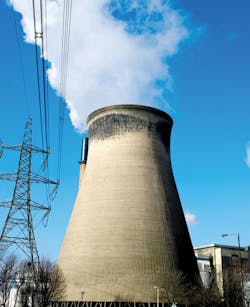After all, the Columbus, Ohio-based utility is the largest coal consumer in the United States, and one of the nation’s largest emitters of carbon dioxide (CO2)—a primary greenhouse gas—operating some 32 coal-fired plants throughout its 11-state Midwest territory. But in fact, the effort required by AEP to comply with the new EPA ruling has been minimal. “There is some work in getting it set up, but I wouldn’t call it hugely significant, because we already have systems in place, due to all the prior work that we’ve done,” says Greg McCall, AEP senior engineer, environmental services.Indeed, AEP recognized early on that climate change concerns could one day lead to regulation of CO2 that would have a major impact on its business. And the utility long ago launched a strategy to prepare for that eventuality, by becoming actively engaged with the issue. AEP has been participating in various voluntary CO2 reporting programs since the early 1990s, says McCall. In 2003, the company was a founding member of the Chicago Climate Exchange, a voluntary cap-and-trade program for reducing and trading greenhouse gas (GHG) emissions.Stay engaged“We want to stay engaged on the issue, so that we can help influence the discussions and make sure they are reasonable for our customers and our stockholders,” McCall observes. And by maintaining detailed knowledge of the company’s carbon footprint, AEP expects to be better positioned when, and if, U.S. laws or regulations go beyond today’s mandatory GHG emissions reporting to include mandatory reduction efforts as well.The AEP strategy has been aided by the use of strong environmental management software. In the early days, the company tracked and reported its environmental compliance requirements manually using spreadsheets. But in 2003, AEP signed on with Enviance Inc., a Carlsbad, Calif., company founded in 1999 that provides environmental management software using a software-as-a-service (SaaS) model. This approach—today often referred to as “cloud-based” computing—was attractive to AEP, because it relied on externally hosted software that could be accessed by the company over the Internet, and did not require involvement by AEP’s busy information technology (IT) department, McCall says.Another attractive feature of Enviance is its ability to handle a broad spectrum of environmental issues, McCall adds. Early AEP work focused on setting up Enviance as a tool to support the company’s reporting under the 1990 amendments to the federal Clean Air Act, which regulate “acid rain” pollutants such as sulfur dioxide and nitric oxide. But by 2005, AEP had the Enviance solution running for what Enviance President and Chief Executive Officer Lawrence Goldenhersh calls “the world’s first CO2 tracking and management system.”McCall downplays that accomplishment. “I wouldn’t characterize it nearly as exclusively as that,” he says. But he does allow that AEP has been among the leaders in managing its GHG emissions and other environmental programs. “We would like to be recognized as doing an excellent job of making sure that we’re minimizing the impact of our operations,” says McCall. The company has also extended the use of Enviance for managing its water permits under environmental laws, he notes, and is also working on using the solution for its waste management programs, among others.Software benefitsAt Enviance, Goldenhersh says that published cost studies have shown that his company’s solution can save users $500,000 per facility per year through elimination of manual activities and improved management of GHG data. “We automate data collection, data analysis, task management and reporting,” he says. “Those are the four things that happen in compliance.”McCall concurs that the software has significantly reduced the amount of time required for data collection and data entry by AEP engineers. “Enviance allows you to put the investment up front in building all the methodologies for doing the calculations, and in using the skills of your staff to make sure that the numbers are right, rather than focusing so much time on just collecting the data,” he says.Another key benefit of the software comes in its ability to better ensure that compliance activities are properly carried out. “What this software does for us, particularly with this new [EPA reporting] rule, is it reduces a lot of our risk and exposure to regulation by allowing us to build in environmental management systems to make sure that the data is flowing properly and accurately,” McCall observes.Don’t forgetFor example, he says, Enviance enables the company to build in requirements and tasks to remind personnel to take certain compliance-related actions. When environmental permits contain pollutant emission limits that are easily achievable, for instance, a plant’s staff may become complacent about regularly checking that level. “But with Enviance, we can build a process in there to make sure we’re checking it,” says McCall. “Even though we are probably never going to hit it, we have the comfort of knowing that an alarm will go off, or that the system is going to send somebody an e-mail if we ever do get close to that limit,” he explains.That can pay dividends when dealing with regulators. “An agency treats you a whole lot differently if they can see that you had something in place and maybe something just went wrong, than if you were just not even paying attention to it,” McCall concludes.Related Feature - A Pragmatic Response to Climate-change RegulationTo read the feature article relating to this story, go towww.automationworld.com/feature-6823.
Subscribe to Automation World's RSS Feeds for Feature Articles
About the Author
Wes Iversen
Managing Editor
Sign up for our eNewsletters
Get the latest news and updates

Leaders relevant to this article:
